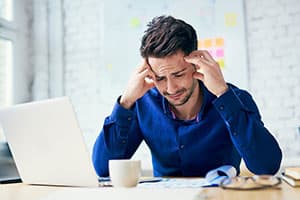The Impact of People, Places and Things in Recovery Processes
When you’re reading information pertaining to addiction, it doesn’t take long before you encounter the phrase “people, places, and things.” But why are these so important, and what do they have to do with addiction and recovery?
The people, places, and things you experience every day play a vital role in encouraging or discouraging substance use, no matter the stage of addiction or recovery. If you want to remain substance-free, you must make some changes to the people, places, and things with which you normally engage.
Triggers for Substance Use and Relapse
 The phrase “people, places, and things” refers to triggers. Triggers are the problematic cues that lead to a craving, which is a strong—often overwhelming—desire to obtain and use your substance of abuse.1
The phrase “people, places, and things” refers to triggers. Triggers are the problematic cues that lead to a craving, which is a strong—often overwhelming—desire to obtain and use your substance of abuse.1
People, and even animals, learn to respond to triggers through a process called conditioning.2 In the famous experiment, a scientist named Pavlov rang a bell each time he fed a dog. The dog learned to associate food with the bell, so whenever the bell rang, the dog came to expect food, as indicated by an increase in salivation whenever it heard the sound.2
People, place, and thing triggers develop in the same way. The “high” of drugs and alcohol (like the dog’s food) produce a strong rewarding sensation, and since the brain is programmed to seek out and repeat rewarding activities, it remembers every detail (such as the bell) about the experience. These details include:
- Who you are with.
- What you are doing.
- Where you are.
- What time it is.
- How you were feeling before and are feeling during use.
With the association established, the people, places, and things are strongly connected to drug use, and your brain begins to expect the drug when a trigger is present.3
The People
Your people triggers can include a surprisingly wide range of people from your past and present like:
- Your parents.
- Siblings.
- Other family members, both living and deceased.
- Current or former romantic partners.
- Coworkers.
- People with whom you used.
- People from whom you bought drugs.
People triggers don’t include only those who were present when you used; they are also the important people in your life who are capable of creating strong emotional responses.
The Places
Many of the places that trigger you will make perfect sense. If you drank heavily at a certain bar for many years, you will likely be triggered by that bar. However, others may surprise you, and there is no way to accurately predict all triggers. Depending on your habits and type of substance(s) used, place triggers can include:
- Alleys or abandoned buildings.
- Fields and wooded areas.
- Bars or clubs.
- Your childhood home.
- Pharmacies.
- Doctor’s offices.
- Parking lots.
- A friend’s house.
- Concert venues or sports stadiums.
The Things
As the largest category, thing triggers include everything else that creates cravings. Things can be drug paraphernalia, a movie, an album, a certain day of the week, or a food, for example.
Thing triggers also include all:1
- Patterns like:
- Going to a party.
- Studying for a test.
- Holidays.
- Anniversaries.
- Eating.
- Sex.
- Getting paid.
- Feelings like:
- High stress.
- Anxiety.
- Happiness and excitement.
- Boredom.
- Sadness.
- Loneliness.
Another experience that has the potential to produce severe cravings is withdrawal. Rather than a psychological trigger, the experience of withdrawal is a physiological trigger.4 When you have been regularly using a substance, your system comes to depend on it.1 If the drug is no longer available, you will often experience a set of symptoms that may be (at best) uncomfortable or (at worst) life-threatening and will strongly crave the substance (without the need for an external cue) as a means of putting an immediate stop to these symptoms.
Withdrawal triggers can be intense, but they are time-limited and more predictable than some other triggers. Withdrawal triggers can last just a few hours following last use while others can persist much longer.5 Professional detox programs are set up to allay the suffering of this experience, help you to avoid relapse, and prepare you to further work on your recovery (ideally through continued treatment).
The Dangers of Triggers and Cravings
People, place, and thing triggers pose a real risk. Each time a person consumes a drug, the odds of serious consequences increase. Drugs place tremendous stress on your body, and even single doses can result in unwanted short-term effects such as:6

- Poor attention and memory.
- Confusion.
- Impaired coordination.
- Slurred speech.
- Vomiting.
- Changes to your heart rhythm.
- Seizures.
- Coma,
Drugs also affect your judgment and ability to make good decisions, which can lead to injury, legal issues, and other negative consequences.6 These risks only get more serious as use is prolonged. Dangerous effects of long-term drug use include:7
- Heart disease.
- Stroke.
- Cancer.
- HIV/AIDS.
- Hepatitis and other liver disease.
- Lung disease.
- The emergence or worsening of mental health conditions.
The biggest danger of any substance abuse is death from overdose. In 2016 alone, more than 64,000 people died from a drug overdose, according to the National Institute on Drug Abuse.8 Opioids like heroin and prescription pain medications caused about 60% of these deaths.
The Role of Addiction Treatment
Professional addiction treatment is essential for anyone struggling with addiction. With an effective provider, a comprehensive treatment plan, an adequate time in treatment, and ongoing support, you can establish a sober lifestyle and maintain your sobriety.4
Addiction treatments take place in a variety of settings, intensities, and durations suited to your needs. From highly structured and long-lasting inpatient/residential programs to less intensive, short-term outpatient options, addiction treatment will encourage you to focus on the role of people, places, and things in your addiction and recovery.4
Identifying Your Triggers
It is not enough to limit the negative elements in your life—you must actively seek out positive experiences, activities, and people.At the onset, treatment will involve creating a working list of your triggers.2 This list will contain every person, place, and thing you associate with substance use. The process of creating this list can be stressful and overwhelming, as even thinking about a trigger can create strong cravings for the drug.2
A professional can guide you through this process of discovery in a safe and comfortable way to reduce risk of relapse. Also, they can challenge you to look deeper into your addiction or help you discover your personal triggers by naming people, places, and things that frequently trigger others.
Coping With Your Triggers
Once your list is established, you can transition to the next stage: coping with triggers. Therapists will teach you skills including the following:2
- Avoidance. If a person, place, or thing makes you want to use, avoid it. Stay away when possible.
- Talking about it. By discussing the triggers, when they present, and how they make you feel in a supportive setting, you begin to take control back from the trigger.
- Going with it. Cravings come and go, and fear only makes the feeling stronger. Rather than seeing triggers as scary stimuli, this strategy views triggers and cravings as temporary problems that can be overcome with time and patience.
By changing your interactions with the people, places, and things that produce cravings, you will be able to limit their power over you. By staying aware of what affects you most and learning coping tools, you’ll be able to maintain your sobriety more easily.
Finding New People, Places, and Things
In addiction recovery, it is not enough to limit the negative elements in your life—you must actively seek out positive experiences, activities, and people. Through engaging different people in new situations, your brain can build associations to replace the old triggers with healthy stimuli.
You can find sober people, places, and things by:9
- Reconnecting with friends and family members with whom you have a positive and supportive relationship.
- Attending family therapy to work on resolving existing conflict or strain that serves as a trigger to use.
- Practicing relaxation techniques like deep breathing to calm your body and mind.
- Exercising, eating well, and getting good rest. Improving your physical health can benefit your mental health and recovery.
- Exploring books, songs, and movies that stimulate positive feelings.
- Reengaging in old healthy hobbies you once enjoyed, e.g., hiking, sports, or playing music.
Attending support groups like AA and NA are other ways to break old habits and establish new ones.4 These self-help groups connect you to a network of sober people in sober places doing sober things.
Certain people, places, and things can trigger cravings and relapse. Healthy people, places, and things can trigger happiness, success, and sobriety.
The concept of change is challenging, but the risks of continued use are extraordinarily high. Anyone battling with their triggers and concerned about imminent relapse should seek out professional addiction treatment. An effective program can help you identify, avoid, and cope with old triggers while building a new foundation that supports sobriety.